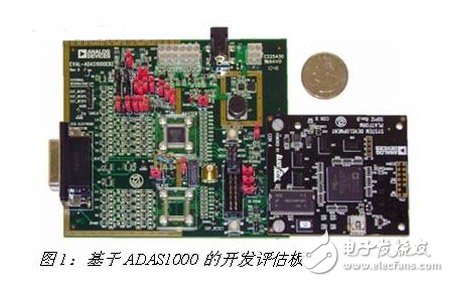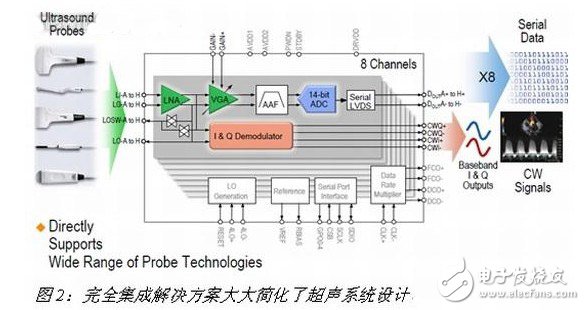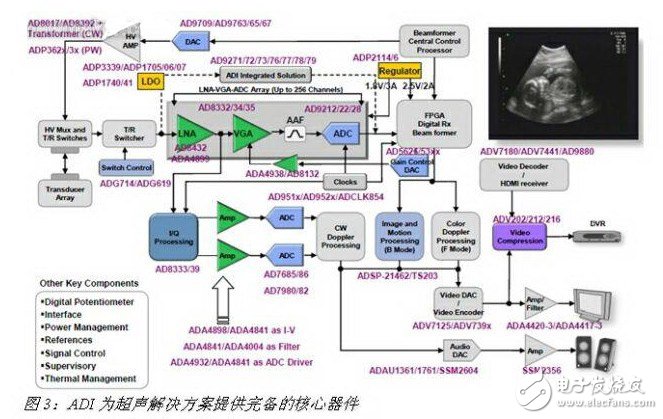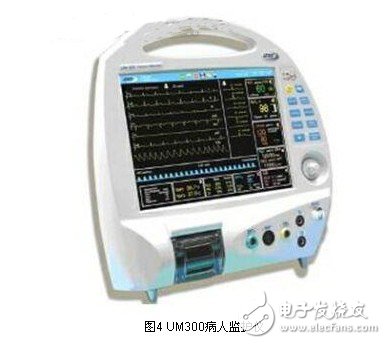iPad2 accelerates medical device diagnostic grade product portability
iPad2 is on the lookout of Apple fans around the world and is expected to continue to write Apple's legend. In the recent news, the medical community, which did not connect with Apple, also had a relationship with Apple: The US Food and Drug Administration (FDA) approved the Apple iPad/iPhone for the first time as an auxiliary product for medical imaging diagnostic radiology. Can be used to achieve computed tomography (CT), magnetic resonance imaging (MRI) results interpretation. In fact, the medical application of the iPad has long been and is not limited to this. In the iPad's more than 30,000 applications, there are 504 medical categories (data as of September 2010).
For medical devices, especially portable medical device manufacturers, it is better to interpret this information as a market competition threat as a reference for their product strategy, especially Apple's superior performance in the portable performance design of iPad products. The iPad2 is reduced by 33% in thickness and 15% in weight, while it can be used for 10 hours on a single charge and standby for one month. Because the portability and low power consumption of medical devices have become a trend: it was only used in large hospitals. Large-scale medical equipment will show the trend of miniaturization, low cost and more convenient use to adapt to the needs of the construction of primary medical institutions; as the problem of population aging is intensifying, the application of home monitoring is also a development trend. In addition to the home use of blood glucose and blood pressure testing, it is expected that future devices such as ECG may enter the home. If you can grasp this trend like Apple in your product design, you will take the lead.
At the International IC Show held in Shenzhen in 2011, ADI, a leading global provider of high-performance signal processing solutions and a supplier to the medical device industry, exhibited a wide range of medical product solutions, including the latest low-profile solutions. Power consumption, diagnostic-level electrocardiogram (ECG) application analog front-end chip ADAS1000 and the latest award-winning eight-channel medical ultrasound analog front end AD9278 and AD9279. In addition to ADI's industry-leading high precision, these products and solutions rely on a deep understanding of medical system design and precise customer requirements to solve the previous discrete solution design from the inside of the chip with higher integration. Many technical challenges, high integration and low power consumption have led to the development of portable medical device technology.
ADAS1000 makes ECG smaller and more portable
The ADAS1000 is the first product from Analog Devices to introduce the fully integrated analog front end (AFE) family of chips that support the ECG system for both supervisory and diagnostic performance at the beginning of the year. The device also integrates pacemaker pulse detection and respiratory measurement capabilities, as well as Lead core ECG measurement and support functions, including lead disconnect detection and right leg drive, are critical to high performance ECG systems. The device is effective for a variety of ECG systems, including diagnostic electrocardiographs, bedside patient monitoring systems, dynamic monitors, and cardiac defibrillators. The high performance of the ADAS1000 makes it ideal for developing high-end diagnostic equipment that helps doctors more accurately diagnose a variety of conditions affecting the human heart, while its high integration and low power consumption make it compatible with portable ECG products.
The ADAS1000 AFE implements a complete ECG system in a single package. The signal chain BOM (Bill of Materials) based on the chip is significantly reduced, from as many as 50 devices to a single-chip ADAS1000, plus several discrete devices. It greatly simplifies the design of the ECG system and greatly reduces the board area. The left circuit of Figure 1 is the ECG analog front end part (the dark circuit board on the right is the DSP main control function circuit), in which two ADAS1000 chips (one of which is not patched) are used to achieve the lead expansion. As you can see from the figure, the circuit is very clean (in fact, additional circuit and layout considerations are added to the circuit for ease of testing).

Power consumption is the most important indicator of portable ECG. Usually patients need to carry a portable dynamic ECG monitor for one week or several days to understand the heart's beating rules and accurately determine the health of the heart. Generally, at least 8 to 10 hours of equipment life is guaranteed. The limited capacity of the currently used lithium battery poses a great challenge to the system's low power design, and the design engineer must adopt a solution with a lower power budget. The ADAS1000 is designed for low power optimization and incorporates design options for lower power consumption to maximize power and performance balance. To reduce power consumption, you can easily disable any unused channels or features when using the ADAS1000. You can turn off the signal acquisition channel, reduce the sampling rate, or use different data frame rates to minimize the minimum power consumption of a lead. Up to 11mW, the power consumption of the three-lead measurement is 14mW, and the operating power of the five ECG electrodes is 19mW. In addition, the ADAS1000 employs a flexible power/noise adjustment option that can be designed to withstand the appropriate noise to reduce power consumption for specific applications or to reduce noise at the expense of proper power dissipation.
The fourth generation of eight-channel ultrasound receivers highlights low power consumption and small size advantages
Four years ago, Analog Devices introduced the industry's first AD9271 device that integrates a complete eight-channel ultrasound receiver on a single chip. ADI has subsequently introduced other eight-channel ultrasound receivers, including the AD9272 for mid- to high-end hand-push ultrasound systems, the AD9273 for portable ultrasound systems, and the AD9276 and AD9277 for high-quality continuous wave (CW) Doppler processing. . The new eight-channel ultrasound analog front-end AD9278 and AD9279, introduced before the year, rewrote the performance of an eight-channel ultrasonic receive channel: 45dB variable gain range, fully differential signal path, active input preamplifier termination, maximum 52dB gain And an analog-to-digital converter with a conversion rate of up to 80MSPS.

The AD927x product development path reflects ADI's technological development requirements for high-performance, highly integrated, low-power designs for medical electronics: the AD9272 integrates LNA/VGA, ADC, and anti-aliasing filters to overcome discrete solutions Possible matching design challenges and PCB layout between LNA / VGA, ADC and anti-aliasing filter devices have greatly reduced PCB size; AD9276/7 integrates CW Doppler modulator to help system design engineers further improve relative to discrete The noise performance of the solution; the AD9278 and AD9279 devices integrate ADI's world-leading data conversion technology to achieve low-noise TGC (time gain control) mode performance, in addition to a high dynamic range I/Q demodulator Reduce the power and area required to achieve continuous wave (CW) Doppler processing. In addition, the new eight-channel ultrasound receiver delivers the highest level of output at a large signal SNR (up to 6dB), helping to increase the sensitivity of diagnostic ultrasound systems while reducing board space by up to 40%.
Both the AD9278 and AD9279 are optimized for dynamic performance and low power consumption, making them suitable for applications requiring small package sizes. In CW mode, the AD9278 has an ultra-low power consumption of 25 mW per channel, and the AD9279 provides 50 mW of low power per channel. In TGC mode, the AD9278 consumes only 88mW per channel at 40MSPS, while the AD9279 consumes only 139mW per channel at 40MSPS. The AD9278 eight-channel ultrasound receiver is designed for portable ultrasound systems, while the AD9279 is suitable for high-end and mid-range systems.
One-stop support and technical support provide the perfect solution

ADI is introducing these latest high-performance analog devices, based on its comprehensive analog and digital device products and technologies, and provides engineers with industry-leading performance core package options and a complete evaluation system based on these devices. For the ADAS1000, companion devices include Blackfin DSP (Digital Signal Processor), single-chip USB isolator ADuM4160, four-channel digital isolator ADuM2401, 5kV isolated DC/DC converter ADuM6000, wireless ISM bandwidth transceiver ADF7023, linear power regulator ADP150 And ADP151. The eight-channel ultrasonic analog front-end AD9278 and AD9279 companion devices include: low noise, high speed amplifier AD8021; low power, low distortion amplifier ADA4841-2; 18-bit, 1MSPS PulSARR ADC AD7982; 3.0 V ultra low noise reference ADR433; clock Generator AD9516; clock generator AD9520; clock fanout buffers ADCLK946 and ADCLK846.

ADI is introducing these latest high-performance analog devices, based on its comprehensive analog and digital device products and technologies, and provides engineers with industry-leading performance core package options and a complete evaluation system based on these devices. For the ADAS1000, companion devices include Blackfin DSP (Digital Signal Processor), single-chip USB isolator ADuM4160, four-channel digital isolator ADuM2401, 5kV isolated DC/DC converter ADuM6000, wireless ISM bandwidth transceiver ADF7023, linear power regulator ADP150 And ADP151. The eight-channel ultrasonic analog front-end AD9278 and AD9279 companion devices include: low noise, high speed amplifier AD8021; low power, low distortion amplifier ADA4841-2; 18-bit, 1MSPS PulSARR ADC AD7982; 3.0 V ultra low noise reference ADR433; clock Generator AD9516; clock generator AD9520; clock fanout buffers ADCLK946 and ADCLK846.
We are the manufacturer of producing energy saving ceiling lamps. There are three color temperatures with cool white, warm white and natural white of down lights. Available RD/BL/GR/PK with multi-color options for you. The unique features of LED Down Light are: CRI>80, PF>0.5. These ceiling lamps are mainly apply to hotel, restaurant, office, shopping mall, super market, residence, hospital, coffee bar, club, staircase, entrance and toilet etc. Specially molded led down light in high grade pure polycarbonate material and with aluminum heat sink brings superior insulation performance, cost effective, easy installed, durable illumination on your ceiling. Such simple design PC led down lighting creats a very good light ambience after it is installed in home, hotel hall and supermarkets etc, it is a popular choice for ceiling lighting facility.
Smd Downlight,Smd Led Panel Downlight,Led Smd Downlight,Smd Downlight Housing
Jiangmen Lika Lighting Electrical Appliances Co., Ltd , https://www.lika-led.com